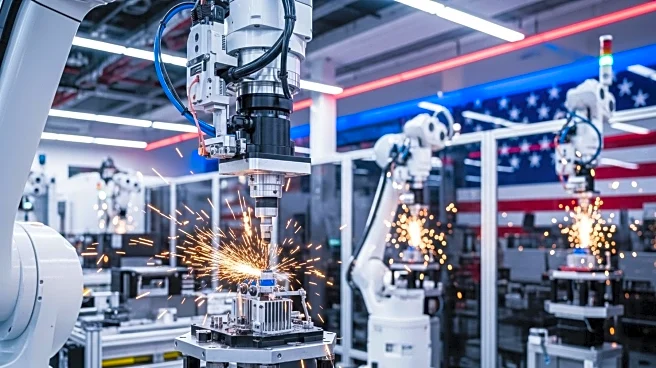What's Happening?
Hanwha Aerospace is in discussions with the U.S. Government to localize energetics production through a government-owned, company-operated model. The company plans to produce 155mm artillery rounds with base bleed units, which extend the range of the shell by reducing aerodynamic drag. This initiative is part of a broader effort to address the U.S. Army's artillery gap, as the military shifts focus from insurgency missions to large-scale combat operations. Hanwha Aerospace proposes to invest in a Fully Automated Modular Charge Facility in the U.S., capable of producing 300,000 rounds per year autonomously. The first such facility is expected to open in South Korea in 2027, with potential expansion to the UK and Europe.
Why It's Important?
Reviving munitions production in the U.S. is critical for enhancing military readiness and addressing the artillery gap. Hanwha Aerospace's proposal to establish a fully automated production facility could significantly increase the U.S. Army's capacity to produce artillery rounds, which are essential for large-scale combat operations. This development reflects broader trends in defense manufacturing and automation, which could lead to increased efficiency and reduced reliance on foreign suppliers. The initiative also highlights the importance of international partnerships in strengthening defense capabilities and ensuring national security.
What's Next?
Hanwha Aerospace is in ongoing discussions with the U.S. Government to establish a Fully Automated Modular Charge Facility. The company plans to open the first facility in South Korea in 2027, with potential expansion to other regions. The U.S. Government's decision on this proposal could shape the future of munitions production and influence broader trends in defense manufacturing and automation.
Beyond the Headlines
The proposal to establish a fully automated munitions production facility underscores the growing trend of automation in defense manufacturing. This approach could lead to increased efficiency, reduced labor costs, and enhanced production capacity. The initiative also highlights the importance of international collaboration in defense sectors, which could drive long-term changes in how military organizations produce and supply munitions.












